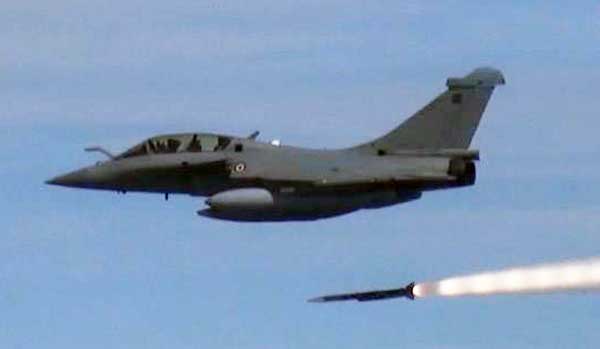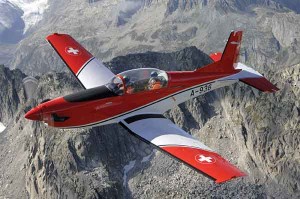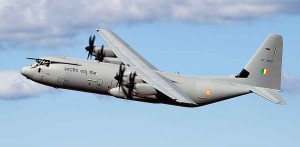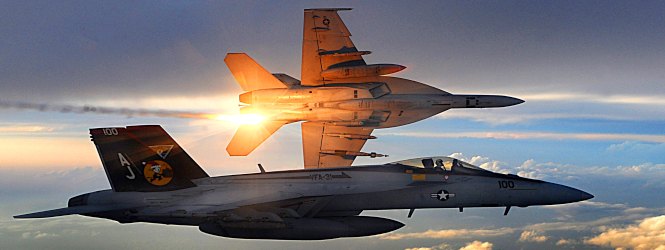Indian Air Force: 2025
By Air Marshal Anil Chopra
29 Oct , 2016

With the Middle East in flames and Pakistan military-terrorist nexus routinely triggering border skirmishes, India is virtually at war. China now has a vibrant aircraft industry and routinely displays aggressive behaviour on the Sino-Indian border. Very close military and economic links between China and Pakistan is a cause of concern for India. Build up of India’s military strength has not kept pace with the increasing threat. The new government’s ‘Make in India’ thrust especially on defence is a very welcome move. Mired in bureaucratic red tape and political indecision, the Government of India (GoI) takes years to identify, select and induct military hardware. To cut short the procedure, direct government-to-government purchase is now becoming more of a norm. At the current pace, it may take over 15 years to reach the authorised 42 squadrons. A three-pronged approach is required to get value for money. Drive ‘Make in India’ hard, accelerate purchase of already selected systems and improve serviceability of existing systems.
India has miles to go before the combat fleet achieves the required number of 42 squadrons…
On July 30, 2015, the Minister of Defence Manohar Parrikar informed the Upper House of Parliament that the government had withdrawn the multi-billion dollar tender for the 126 Medium Multi-Role Combat Aircraft (MMRCA), for which the Dassault Rafale was shortlisted in 2012. Earlier during his visit to France in April 2015, Prime Minister Modi had announced that India would purchase 36 Rafale in fly-away condition. The long-awaited deal under a new framework would reportedly cost $7 billion and is near finalisation. The Indian Air Force (IAF) is down to 33 combat squadrons vis-a-vis the authorised 42.
The tech-savvy new Defence Minister has instituted a number of measures for enhanced efficiency such as speedy approvals by the Defence Acquisition Council (DAC), a hike in the levels of Foreign Direct Investment (FDI) in defence production, acceptance of middlemen in defence procurement, revamping of the Defence Research and Development Organisation (DRDO) and review of procedures and norms for blacklisting of companies. The recent oil price crash, low inflation and once again booming economy provide a fresh window of opportunity. For modernisation, the equipment-intensive IAF is the most affected.
To prevent further downslide, the phasing out of five squadrons of older MiG-21 variants has already been delayed to early 2017. The MiG-21 Bison fleet will be forced to continue till 2025 with depleting availability of spares. The DRDO-designed, Hindustan Aeronautics Limited (HAL)-built Light Combat Aircraft (LCA) Tejas Mk I is well behind schedule and the closer-to-specifications LCA Tejas Mk II will not be operational till 2022. When compared with India, China has over double the number of combat aircraft and the IAF’s edge over the Pakistan Air Force (PAF) is at an all-time low of 1.5:1.

Very close military and economic links between China and Pakistan is a cause of concern for India. Build up of India’s military strength has not kept pace with the increasing threat.
The IAF in 2015
The IAF’s top-of-the-line air superiority fighter is the Sukhoi Su-30 MKI. 272 are on order of which 230 have been delivered till date. The 66 MiG-29 aircraft in service are being upgraded jointly with Russia. The 57 Dassault Mirage 2000 aircraft are also under upgrade to Mirage 2000-5 Mk 2 standards. The IAF also has 139 Jaguar and 85 MiG-27 dedicated strike aircraft and significant numbers in both these types are also being modernised. The oldest MiG-21 FLs were phased out in 2013. The IAF still has ten squadrons of MiG-21. Other than the Bison, all will be phased out by 2017. 125 upgraded MiG-21 Bison will be retained but will start depleting by 2017 till they are phased out by 2025. 40 of the LCA Tejas Mk I, meant to replace the MiG-21s, are under induction and the first squadron should be operational by late 2017.
The 104 Antonov An-32 medium transport aircraft, the work-horse of the IAF transport fleet, are being upgraded. The aircraft also have bombing and para-drop roles. The Dornier Do 228 is used for light transport duties. Also used for communications duties is the Hawker Siddeley HS 748, 50 of which remain in service and are to be replaced by the C-295. Starting 1984, 17 Ilyushin Il-76 strategic airlift aircraft (43-tonne payload) were inducted into the IAF. They are gradually being replaced by the Boeing C-17 Globemaster III strategic airlift aircraft with 75-tonne payload capacity.
The IAF has three Beriev A-50 platforms based EL/W-2090 Phalcon AEW&C. Two more are on order. The IAF has seven Ilyushin-78 aerial refuelling aircraft. Six Lockheed C-130J (one crashed later) for Special Operations including troop insertion have also been inducted into the IAF and are stationed at Hindon airbase near New Delhi. The IAF’s VIP Squadron operates the Boeing 737 BBJ and Embraer Legacy ECJ-135.

The Swiss Pilatus PC-7 Mk II is the basic stage trainer. 75 have been inducted and 38 more will be acquired. HAL HJT-16 Kiran Mk I and II are the intermediate stage trainers. The Kiran is to be one day replaced by HAL’s HJT-36 ‘Sitara’ which is still under development and facing serious design issues. The BAE Hawk Mk 132 is the Advanced Jet Trainer. Later, the IAF’s formation aerobatic team will also convert to the Hawk. 106 Hawk trainers were initially ordered and additional orders are being processed.
Well beyond their extended-life, S-125 Pechora and OSA-AK SA-8 Surface-to-Air Missiles (SAM) are finally being phased out…
For years, HAL-built light utility helicopters Chetak and Cheetah have been used for training, rescue and light transport role. Cheetah and its re-engine variant Cheetal, are used for high altitude operations. These aircraft are being initially replaced by HAL’s Dhruv Helicopter. In addition to the light utility role, the Dhruv also has a weaponised version. The Dhruv is also used for the ‘Sarang’ helicopter formation display team.
Mil Mi-8 has been the main medium lift helicopter of the IAF. Later, these were replaced by more modern variants Mi-17, Mi-17 1V, and Mi-17 V5. Mi-17 V5s numbers will go up to 139. The IAF also operates three heavy-lift Mil Mi-26 helicopters. Two squadrons of Mil Mi-25/35 attack helicopters operate in support of the Indian Army.
The IAF’s Unmanned Aerial Vehicle (UAV) fleet consists of IAI Searcher II and Heron. These are used for reconnaissance and surveillance. IAI’s Harpy is the anti-radar combat UAV and DRDO’s Lakshya is used for aerial targeting practice. Well beyond their extended-life, S-125 Pechora and OSA-AK SA-8 Surface-to-Air Missiles (SAM) are finally being phased out and replaced by indigenous Akash medium-range systems. Two out of the eight have already been delivered.

With the secure encrypted Air Force Network (AFNET) becoming operational in 2010, communications and data transfer for the air defence network has been greatly enhanced. The Integrated Air Command and Control System (IACCS) rides on the AFNET. Designed for intrusion prevention, it is a great force multiplier. Currently, the IAF has a Special Operations force called the Garuds consisting of 1,500 personnel drawn from different branches. With Special Operations aircraft such as the C-130, the Garud force will go up to around 5,000 to undertake combat search and rescue, Suppression of Enemy Air Defence (SEAD), radar busting, missile and munitions guidance and other missions.
The IAF requires 14 LCA Squadrons with 294 aircraft to replace the MiG-21s…
Modernisation – Work in Progress
The upgrade of the MiG-29 air superiority aircraft into multi-role MiG-29 UPG will increase internal and external fuel carriage, aerial refuelling probe, latest avionics including Zhuk-M radar and new air-to-air missiles. The air superiority fighter Su-30 MKI is being upgraded to have strategic weapons such as the BrahMos cruise missiles and nuclear-capable Nirbhay missiles. Initially, 40 aircraft will be modernised and will include Active Electronically Scanned Array (AESA) radar, more powerful onboard computers and a new Electronic Warfare (EW) suite. The first upgraded aircraft is expected by the end of this year.
The Mirage-2000 aircraft are being stripped down and rewired and upgrade will include the RDY-2 radar, new mission computers, a glass cockpit, helmet-mounted sight, EW systems and the advanced MICA missiles. Aircraft life is also being extended by 20 years. Upgraded Jaguars are getting the multi-mode radar, an autopilot and more powerful Honeywell F125IN engines.
As on date, the IAF has ordered 40 LCA Mk I aircraft. The Mk I does not meet the IAF’s Final Operational Clearance (FOC) specifications. The IAF has also committed for 83 Tejas Mk II with the more powerful 98 kN thrust F414 engine, which is more likely to meet the LCA FOC albeit not earlier than 2022. Finally, the IAF requires 14 LCA Squadrons with 294 aircraft (including two-seaters) to replace the MiG-21s. Six LCA Mk I and four Mk II squadrons are expected by 2025. The DRDO also has plans to develop indigenous Active Electronically Scanned Array (AESA) radar ‘Uttam’ and a development partner is under selection.
Europe’s Airbus Defence and Space and Israel’s Elta are contenders. The Tejas is also to be equipped with an Infra-Red Search and Track (IRST) sensor pods, FLIR targeting pod, ECM pods, flare and chaff pod and EO/IR sensor pod. The Electronic Warfare (EW) suite ‘Mayavi’ is to be developed by the Defence Avionics Research Establishment (DARE). In view of the delays, unspecified numbers of EW suites have been purchased from Israel’s Elisra. A stealthier LCA Mk III is also planned for the future.
Six additional Lockheed C-130J Super Hercules Special Operations aircraft are being ordered and will be based in the Eastern region. Acquisition of ten additional Boeing C-17 Globemaster III aircraft will give the IAF significant global strategic capability. Shortlisted 56 medium-transport aircraft EADS CASA C-295 to replace the HS-748 fleet will now be built in India by a consortium of Airbus Defence and Space and Tata Advanced Systems.
The government needs to revamp the DRDO and defence PSUs and free them from bureaucratic clutches…
Beyond the 106 Pilatus PC-7 Mk II trainers, HAL has reportedly been given the go ahead to produce 68 HTT-40 basic trainers along with an international partner. HAL has chosen Honeywell Garrett TPE331-12B turboprop engine for the same. 15 heavy-lift Boeing Chinook CH-47F and 22 Boeing AH-64D Apache Longbow attack helicopters have been selected for acquisition and contracts have been signed on September 27, 2015. Additional ALH Dhruv helicopters are on order and one day, the IAF may have more than 100 aircraft. With the AgustaWestland deal for 12 AW101 VVIP helicopters under arbitration, refurbished Mi-17s will be used for VVIP duties in the interim.
In December 2014, Kamov Ka-226T was selected to be the Light Utility Helicopter for the three services to replace the fleet of Chetak and Cheetah helicopters. Kamov will set up a plant in India to manufacture these. In the long run, around 400 will be required by various users. The IAF has sent out a Request For Information (RFI) to international suppliers for an Unmanned Combat Air Vehicle (UCAV) with low radar cross-section, high service ceiling, long range and capability to carry precision-guided weapons in an internal weapons bay.
In August 2008, a deal was signed with Israel to jointly develop an advanced version of the SPYDER Surface-to-Air Missile. 18 units are required by IAF. IAI’s Harop UCAVs have also been ordered. The DRDO has developed the nuclear capable Nirbhay cruise missile which is capable of hitting targets 1,100 km away with an accuracy of two metres.
HAL has not been able to offer a viable indigenous basic trainer…
Strengthen Indian Aviation Production
Of India’s defence requirements, 70 per cent is met through imports, 25 per cent through Defence PSUs and the remaining five per cent through the private sector. For India to become a global power, defence manufacturing has to be strengthened. Many Indian companies are already making aviation grade components. Centum Group makes Thales-cleared components for US Armed Forces. Tata Power’s Strategic Engineering Division (SED) won the Indian Army contract for two electronic warfare systems beating Israeli firm Elta. SED secured orders for Pinaka Multi-Barrel Rocket Launcher, Akash Launcher and Integrated EW System for the Indian Army and the IAF.
Mahindra Group bagged a large aero-components production contract and will supply in excess of a million parts per annum for several Airbus aircraft. Several companies such as Avasarala Technologies, DefSys, Ravilla and Taneja Aerospace have acquired advanced technological capabilities. Dynamatic Technologies makes assemblies of vertical fins for Sukhoi 30 MKI fighters. Samtel electronics makes SU-30 Head-Up Displays and other electronics. Meanwhile, the government needs to revamp the DRDO and defence PSUs and free them from bureaucratic clutches and prepare for market forces.
Accelerate Projects and Procurements
The Rafale was selected after a grueling selection process from among the best on offer in the world. Delays in signing the contract have implications and are best curtailed. Buying additional SU-30s in-lieu, which have had serviceability of mere 50 per cent in place of the Rafale would be akin to putting all eggs back in the Russian basket. The Fifth Generation Fighter Aircraft (FGFA) and the twin-engine Multirole Transport Aircraft (MTA), both with Russia, are facing delays and seriously disputed cost escalations.
The DRDO is developing a Medium Altitude Long Endurance (MALE) UAV named ‘Rustam’ to replace / supplement the Heron UAVs in service…
Meanwhile, additional C-17s and C-130s are awaiting fund allocations. Similar is the status for Boeing Apache attack helicopters and CH-47 Chinook. In view of the new guidelines on blacklisting companies and favourable judgements in Italian courts, the MoD may review cancellation of the AugustaWestland VVIP helicopter deal. Another area of concern is flying training. The Pilatus PC-7 Mk II for basic stage training has proved very good. HAL has not been able to offer a viable indigenous basic trainer. The 45-year old second stage Kiran aircraft is already overstretched and HAL’s Intermediate Jet Trainer (IJT) is far from ready. The IAF is short of nearly 900 pilots. The training capacity at the Air Force Academy needs to be increased. The acquisition process for the Basic and Intermediate trainer needs to be hastened.
The future of aviation lies in unmanned craft. The USA already has more unmanned than manned airborne platforms. India needs to procure more UAVs and accelerate indigenous development. The IAF is at the lowest ever state with regard to the inventory of SAMs and needs quick replacements. Aerial weapons normally have a shelf life of around ten years. PGMs such as Laser/TV/IR Guided Bombs and missiles are crucial assets. New weapons are planned with SU-30 MKI and Mirage 2000 upgrades. They will also get inducted with Rafale. India’s joint ventures between Israeli firms and DRDO for projects such as Astra, Maitri and Nirbhay missiles and Sudarshan LGB need hastening. Induction of at least four more Israeli Aerostat radar systems has been long pending.
IAF aircraft fleet serviceability has been hovering between 50 to 70 per cent…
High Aircraft Serviceability – Adds Numbers
IAF aircraft fleet serviceability has been hovering between 50 to 70 per cent. Taking into account sub-system unserviceability, effectively nearly half the inventory is operationally unavailable. Military controlled Pakistan maintains serviceability of 85 per cent. A large number of imported systems often mean long supply chains and lead time could be up to 18 months for spares and repairs. Such timeframes are operationally and financially unaffordable. To illustrate, 900 combat aircraft force with 50 per cent serviceability effectively would leave only 450 aircraft for combat. Every five per cent improvement in serviceability would add over two squadrons to the available fleet. The serviceability could be increased by a fraction of the investment required for a new purchase.
The IAF of 2025
In October 2007, India and Russia signed a pact to develop a Fifth Generation Fighter Aircraft (FGFA) which is a derivative of the in-development single-seat Russian T-50 PAK FA. The first squadron may be operational by 2020. The IAF requires 200 twin-seat and 50 single-seat aircraft to replace the MiG-29s and MiG-27s. HAL and ADA have also started design work on a fifth generation stealth multi-role Advanced Medium Combat Aircraft (AMCA). This is likely to be a 20 tonne-class aircraft. Around 2023, it may begin replacing the Jaguar and Mirage 2000 fighters. The IAF requires around 250 AMCAs.
Six Airbus A330 tankers are also on order. The DRDO’s Centre for Airborne Systems (CABS) is developing Embraer EMB-145 based Airborne Early Warning and Control (AEW&C). A foreign vendor will initially supply the Active Array Antenna Unit (AAAU) and other sub-systems selected by IAF. The IAF requires 24 such aircraft. HAL and United Aircraft Corporation (UAC) of Russia will jointly develop and build an IL-214 design-based Multirole Transport Aircraft (MTA). Both are investing $300 million each and the aircraft is expected to enter service by 2018. This 18.5-tonne payload and 2,500-km range jet aircraft will also have para-drop role. The IAF plans to acquire 45 MTAs.
On an average, a mid-sized fighter aircraft costs $60 million. To acquire even just 15 squadrons over the next ten years, $18 billion will be required just for new aircraft.
HAL is developing the Light Combat Helicopter (LCH) for the IAF based on the Dhruv platform. 68 are required and are being designed for anti-infantry and anti-armour role operating at altitudes up to 6,500 metres. The DRDO is developing a Medium Altitude Long Endurance (MALE) UAV named ‘Rustam’ to replace/supplement the Heron UAVs in service. DRDO is also developing the Autonomous Unmanned Research Aircraft (AURA), an Unmanned Combat Air Vehicle (UCAV) which will be a tactical stealth aircraft built largely with composites and capable of delivering laser-guided strike weapons. India and Israel have agreed to expand their missile development cooperation with a longer-range version of their extended-range Barak-8 air defence system for the IAF.
The DRDO is also likely to develop the Maitri Low Level Quick Reaction Missile (LLQRM) with MBDA. In the meanwhile, the indigenous Rohini and Reporter ground-based radars need to grow in numbers. After induction of 19 Israeli Elta 2284 Medium Powered Radars (MPR), the IAF awaits DRDO’s ‘Anudhra’ MPR. The indigenous Ballistic Missile Defence (BMD) system based on the Swordfish radar derived from the Israeli Green Pine radar, and the Prithvi Advanced Air Defence (AAD) missiles should be in place in next eight to ten years. The indigenous Astra Beyond Visual Range (BVR) air-to-air missile has already been tested successfully on the Su-30 MKI and the induction process is on.
To replace the overdue for phasing out squadrons and to make up for the shortfall of nine squadrons would require very large numbers of aircraft. On an average, a mid-sized fighter aircraft costs $60 million. To acquire even just 15 squadrons over the next ten years, $18 billion will be required just for new aircraft. Weapons and ground infrastructure will add up to much more. The Union Budget 2015-2016 had $40 billion earmarked for defence. 90 per cent of the $19 billion earmarked for new acquisitions this year would be required for committed liabilities of payments for earlier procurements. A conscious national commitment is required to make good the numbers.
The state of the IAF in the year 2025 can be summed up by the graphic. If all goes well, in the year 2025, the IAF would have two squadrons each of Mirage-2000 and MiG-29, three of Jaguars, 14 of SU-30 MKI, six LCA Mk I, four LCA Mk II, four MMRCA (Rafale), three FGFA and one of AMCA, totalling at best 38 Squadrons. Clearly, India has miles to go before the combat fleet achieves the required number of 42 squadrons.
© Copyright 2016 Indian Defence Review






